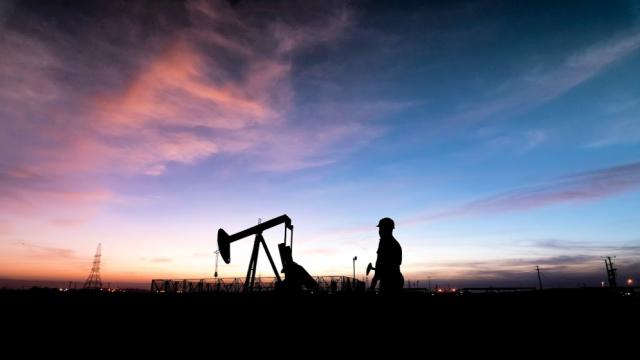
The U.S. has warned of increased threats to energy facilities in the Middle East. (Source: Shutterstock.com)
Oil prices surpassed $70 a barrel on Jan. 6 for the first time in more than three months as the U.S. warned of increased threats to energy facilities in the Middle East, after the assassination of an Iranian general last week.
Brent crude, the international benchmark, was up 2.1% at $70.07 in early European trading, having risen as high as $70.74 in Asian trade. Brent has climbed more than 5% since a U.S. air strike killed Qassem Soleimani in Iraq on Jan. 3.
The latest gains followed a weekend of threats between Washington and Tehran, bringing the pair closer to conflict and raising tensions throughout the Middle East.
Crude previously traded above $70 a barrel in September after drone strikes, which the U.S. blamed on Iran, temporarily knocked out half of Saudi Arabia’s oil production.
Soleimani was the head of the Iranian Revolutionary Guard’s overseas forces and controlled the regime’s extensive influence across Lebanon, Iraq, Syria and Yemen.
The U.S. state department warned on Jan. 5 there was an increased risk of attacks on oil facilities and other targets in Saudi Arabia, amid widespread expectations Iran would retaliate for the killing of Soleimani.
Following the assassination, Iran said it would no longer abide by any of its commitments to the 2015 nuclear accord it signed with world powers.
Shares in Saudi Aramco, the kingdom’s state oil company that made its public markets debut last month, eased 1% on Jan. 6 and are now down more than 10% from their peak, as the growing threat to its facilities has overshadowed the impact of gains in the oil price.
The price of West Texas Intermediate, the U.S. crude oil marker, strengthened on Jan. 6 by 1.7% to a high of $64.72, before easing to $63.85 by lunchtime in London.
Oil prices will “likely rise much further if Iran retaliates, either by attacking Saudi oil facilities as it did in September, or attempting to block the Strait of Hormuz, through which 20% of global oil supply is transported”, said Michael Pearce, senior U.S. economist at research group Capital Economics.
Commercial shipping in the Gulf faces particular risks, the Norwegian Ship-owners Mutual War Risks Association, or DNK, said in a confidential intelligence report seen by the Financial Times.
DNK, a major operator in the marine war risk market, forecast a high probability of retaliation against U.S., Israeli and other U.S.-allied interests in the Middle East, and said U.S. or associated vessels in the Strait of Hormuz—the narrow waterway off Iran through which roughly a fifth of the world’s oil supply passes each day—would be regarded as “high-value targets.”
But Goldman Sachs analysts say the risk premium currently baked into prices was already too high and that an “actual supply disruption” would now be necessary to keep prices at current levels.
Still, with Middle East tensions rising, investors have continued to shift out of riskier assets and into haven assets.
The price of gold for immediate delivery rose 1.3% in early-European trading on Jan. 6 to $1,572 an ounce, the highest level since early 2013.
Japan’s Topix equity index sank 1.4% as the yen, also viewed as a haven asset, traded at a three-month high against the U.S. dollar. The yield on U.S. 10-year Treasuries was flat at 1.794, having dipped in Asian trade.
Additional reporting by Myles McCormick.
Recommended Reading
NOG Closes Utica Shale, Delaware Basin Acquisitions
2024-02-05 - Northern Oil and Gas’ Utica deal marks the entry of the non-op E&P in the shale play while it’s Delaware Basin acquisition extends its footprint in the Permian.
Vital Energy Again Ups Interest in Acquired Permian Assets
2024-02-06 - Vital Energy added even more working interests in Permian Basin assets acquired from Henry Energy LP last year at a purchase price discounted versus recent deals, an analyst said.
California Resources Corp., Aera Energy to Combine in $2.1B Merger
2024-02-07 - The announced combination between California Resources and Aera Energy comes one year after Exxon and Shell closed the sale of Aera to a German asset manager for $4 billion.
DXP Enterprises Buys Water Service Company Kappe Associates
2024-02-06 - DXP Enterprise’s purchase of Kappe, a water and wastewater company, adds scale to DXP’s national water management profile.
Tellurian Exploring Sale of Upstream Haynesville Shale Assets
2024-02-06 - Tellurian, which in November raised doubts about its ability to continue as a going concern, said cash from a divestiture would be used to pay off debt and finance the company’s Driftwood LNG project.





